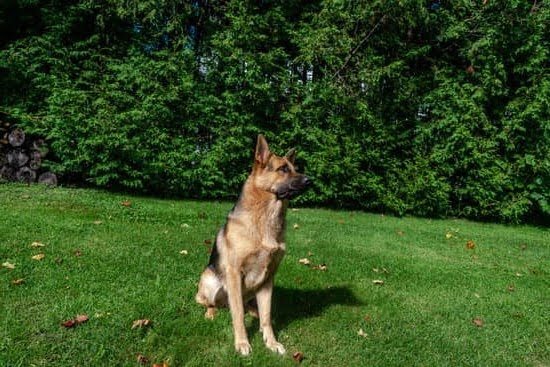Introduction
Dogs bark for a number of reasons – as an expression of joy, fear, boredom and to sound the alarm, but sometimes they bark simply because they want attention. Uncontrolled or excessive barking can be one of the most frustrating canine behaviors. It’s important to remember that teaching your dog to be quiet on command should be done in a controlled environment and with plenty of patience – it’s worth training your pup to stop barking for attention early on as it will save you both time, energy and potential disagreements down the line.
When you train your furry friend not to bark for attention, you’ll benefit from fewer distractions throughout the day. Not only does excessive barking disturb your peace and keep you from concentrating, but it also affects other people surrounding you – such as your neighbours or family members in the same household. Moreover, by teaching them how to not bark for attention, you can start building more trust between you two; this ultimately reinforces their understanding that good behavior is rewarded.
Identifying the Barking Problem
Identifying the Barking Problem: One of the first steps in training a dog to stop barking for attention is to identify what is causing it. A common trigger for this type of barking includes feeling anxious, lonely, or stressed. Other signs that your dog may be barking for attention include if they stand at the door waiting for someone to come in, look up expectantly when anyone enters a room, incessantly licking themselves or pacing around. Listening for Behavioral Cues: Pay attention to your dog’s behavior and take mental notes whenever you notice them getting vocal. At which times did they start barking and what actions preceded it? Did you move away too abruptly or leave them alone in a room? Knowing these triggers can help you address the root cause of why they are barking. Reducing Stress that May Cause Barking: Once you have identified why your pet is behaving this way, it will be much easier to reduce their stress levels in order to prevent the problem from worsening. Consider taking them on more frequent walks that involve lots of playtime and provide them with plenty of loving attention throughout the day. Providing toys, treats, and other distractions can also help relieve some boredom-based aggression that could lead to barking for attention. Finally, if all else fails, using positive reinforcement techniques and rewarding desired behaviors can help establish proper communication between yourself and your pet so that it knows exactly how it should act each time it experiences an urge to bark for attention.
Establishing Expectations
In order to train a dog to stop barking for attention, it is important for owners to first understand the motivation behind their dog’s barking. Different dogs may bark for different reasons, such as due to boredom, loneliness or excitement. Once the underlying issue has been identified, owners should then develop clear rules and expectations regarding when their dog can bark and when it should remain quiet. It is important for owners to be consistent each time those expectations are not met in order to encourage positive behavior changes.
When expecting a dog not to bark when it wants attention, it is important that owners provide an alternate form of communication that the pet will understand. This could include using hand signals or verbal commands if the pet has been trained in these forms of communication or simply calmly saying “No” if they have not. Owners should reward their pet with praise or treats when they follow the rules properly in order to reinforce positive behavior while verbally scolding or ignoring their pet when they approach you while displaying unwanted barking behaviors. Lastly, be sure your expectations are realistic and fair given your pup’s age and ability. With consistency, patience, and positive reinforcement on your part, you can achieve success in teaching your pup how to more effectively ask for your attention!
Defensive Barking
When your dog barks, it’s important to distinguish between friendly and defensive barking. Friendly barking is when your dog is excited or trying to get your attention, while defensive barking signals a warning and your dog may act more confidently or aggressive.
If you can identify when your dog is exhibiting defensive barking, you can take the necessary steps to train them out of this behavior in a positive manner. Start by reinforcing appropriate responses for different situations and rewarding them for doing so. For example, if your dog shows signs of defensive barking when visitors come over, reward them for being calm and quiet. This helps associate positive experiences with visitors arriving at home, which will eventually reduce any stressed behaviors.
In addition to praising the desired response from your pup, it is also important to give an alternate direction such as ‘sit’ or ‘wait’ as a replacement behavior that they can do instead of barking defensively. With consistent repetition, these new commands will become second nature to them over time. You may even want to use treats or other rewards when reinforcing these alternate behaviors in high-pressure situations like welcoming guests into their home space. It is also helpful if visitors understand not to pet or greet the pup until they are calm and quiet as this reinforces defensive behavior patterns instead of extinguishing them over time.
Positive Reinforcement
Positive reinforcement is an incredibly effective way to teach your dog to not bark for attention. You can use a clicker to reinforce desired behavior each time your dog does something good or responds the way you want them to. Give your dog treats, praise, or lots of petting when they successfully follow a command. This will let them know that their behavior is acceptable and receiving positive reinforcement from you. Additionally, teach basic commands such as ‘sit’, ‘down’ and ‘stay’. Instructing your dog in these behaviors will give them something more productive and satisfying than barking for attention. Lastly, identify activities that do not include barking for attention. This can be taking part in organized activity such as obedience training, agility classes or playing games like fetch; or simply spending quality time with your pup such as going for walks or having meal times together. These activities encourage better behavior towards people and other animals and will help limit the need to bark for attention.
Redirecting Attention
Redirecting Attention: Once your pup barks, try providing them with an alternate behavior and reward them with a treat. For example, you can use the command “look away” when they bark for attention and give them a treat once they turn away from you. Keep repeating the command and reward positively until your dog starts to respond by turning their back on you instead of barking for attention.
Introducing Activities: To help your pup stay busy and distract them from barking for attention, it is important to provide activities that keep their mind engaged. Activities like puzzle toys, nose work games and fetch are great options! These activities will help keep your pup distracted from wanting to get your attention through barking. Additionally, make sure that you establish structure in walks and playtime by setting a routine schedule or goal each day that physically and mentally preoccupies them. This will help create consistency in your dog’s life so that they don’t rely on barking to fill time or frustration.
Teaching Sit and Stay
When teaching your dog to sit and stay, it’s important to start with a calm, quiet environment. Have your dog sit on a rug or designated spot, and use treats or verbal praise for correct responses. If your dog isn’t responding correctly, use a firm “no” command followed by gently but firmly guiding them into the correct position. Once you are confident that your dog understands the command, start working on having them stay in that position for longer periods of time. During this process, keep a few treats handy and begin to reward your pup with 1 treat at a time when they have stayed in the same spot adequately. When your pup responds consistently without displaying signs of restlessness, you can gradually increase the time between rewards until your pup is able to remain in one spot without any prompting or rewards.
Creating distractions is an important aspect of training and can help condition your dog to ignore certain triggers when they bark excessively. Place yourself in between those triggers (e.g., other dogs or people) and your pup while giving them specific commands such as “watch me” or “sit-stay”; you may also move slightly in front of them so they focus on you instead of the distractions around them. Give praise upon successful completion of these steps and gradually increasing the level of distraction as needed until eventually there are no more treats needed for compliance – just an occasional word of praise will do!
Finally, teaching nonverbal cues is also essential in preventing barking from attention seeking behaviours since body language is often times easier for dogs to learn than spoken words! When you want to get their attention during those triggers, try making eye contact whilst kneeling down so that your pet does not feel intimidated by any sudden movement or noise; hold out a hand for sniffing; then lightly pat their head or body when appropriate before releases them back into their positoned spot such as Sit or Stay. Once again positive reinforcement in form of verbal praise or treats is key here as well!
Ignoring Unwanted Behavior
It is important to ignore a dog’s barking when it happens in order to send the message that barking does not gain attention. This can be done by maintaining an even temperament and not answering vocalizations, such as “No”. It may also help if you use other tools for training your dog and distracting them from their behavior. The key is to remain consistent with this practice.
Other ways to train a dog to stop barking for attention include redirecting the unwanted behaviors into more desirable ones, such as teaching the dog a command like “sit” or “stand.” If a bark comes out of boredom, it can help to provide your pet with more mental stimulation, including chews and interactive toys. Additionally, ensure that you positively reinforce good behavior whenever possible so that the desired behaviors are favored over unacceptable ones.
Exercise and Socialization
Your dog will fare better if it has regular physical and mental exercise. Long, daily walks are a great way to tire out your pet, so the barking can be curbed. Additionally, find ways for your dog to interact with other people and animals; this provides stimulation and encouragement for positive behavior when around others. Look for events or classes such as group walks, doggie playdates, or trip to a local park that allow socialization in a safe setting.
Training can also help reduce attention-barking by teaching your pup appropriate behavior when you enter the house or when another family member arrives home. For instance, whenever someone enters your house, use the verbal command ‘quiet’ to cue your pup not to bark more than twice; then reward it with a treat once it stops barking. If it continues to bark after two times despite you giving the cue ‘quiet’ have the person leave (even if they just stepped in!) This teaches your pup that barking excessively when someone enters the room is not acceptable behavior and only rewards silence with treats or attention. Over time this should decrease the amount of barking in response to normal household activities.
Conclusion
The key to successfully training your dog to stop barking for attention is consistency and patience. Patience is especially important because it will take time for your dog to learn not to rely on barking in order to get your attention or acknowledgment. With consistent behaviour correction, and positive reinforcement of good behaviour, you will soon see that he/she can be rewarded for good behaviour without the need for excessive vocalisation. It’s also important to remember that dogs bark for a variety of reasons, some of which include boredom, excitement, needing to go out, feeling territorial, or even being provoked. Knowing what could be causing the problem can help you manage it better.
To avoid confusion when training your dog and confusing him/her as to what quiet looks like avoid clapping or stating any commands when he/she barks inappropriately; instead wait until the unwanted noise ends and then SHOW – don’t tell – what is expected by offering verbal praise when they exhibit desired behaviour (such as sitting quietly). Again, keep up with the praise whenever they do not bark. Additionally, providing a lot of mental stimulation activities such as walks and obedience courses are great elements that can reduce boredom and eliminate frustrated barking due to lack of stimulation. Lastly, if needed consider talking with an animal trained professional who can provide tips specific to addressing this issue with your particular canine companion. With these tips and a healthy dose of patience most owners will eventually see success in their efforts in curbing unwanted barking behaviours!

Welcome to the blog! I am a professional dog trainer and have been working with dogs for many years. In this blog, I will be discussing various topics related to dog training, including tips, tricks, and advice. I hope you find this information helpful and informative. Thanks for reading!





